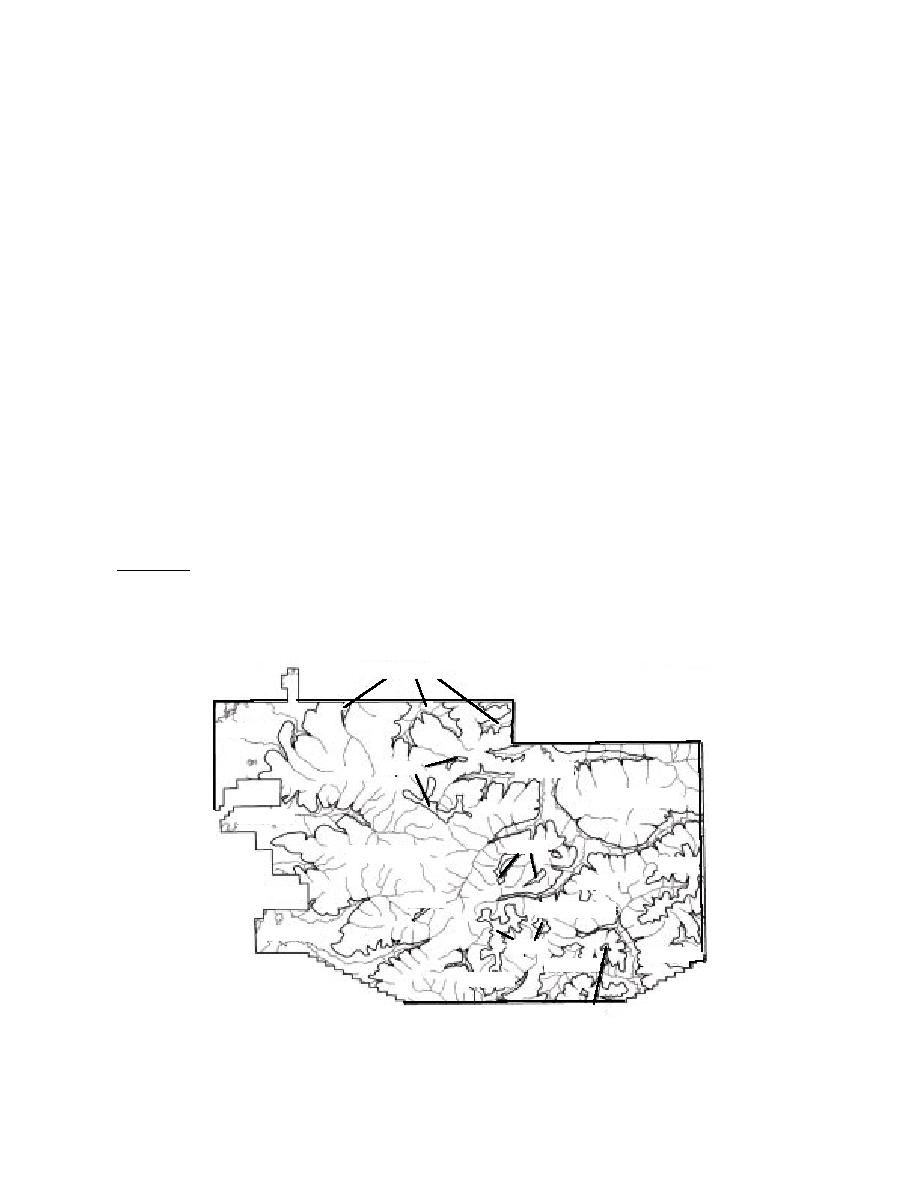
sentative sampling of the study area over the
perts, in particular, Herbarium staff at the Univer-
collecting season. The inventory units represented
sity of Alaska Museum* and researchers from the
a combination of logistical considerations and bio-
Institute of Northern Forestry, U.S. Forest Service,
logical and physical features that included veg-
Fairbanks† (Foote 1992, 1995).
etation, topography, watershed, elevation, geol-
This preliminary checklist was used as a guide
ogy, and soils.
throughout the collecting season to determine col-
The cantonment area is distinguished by major
lection priorities.
disturbances associated with the base housing,
support facilities and services, and airfields on the
Subdivision of base for site selection
eastern edge of the city of Fairbanks (Fig. 1 and 5).
The overall approach of this study was first to
Areas here are largely artificially cleared or dis-
recognize the range of environmental variation on
turbed, including powerlines, roadsides, railroad
Fort Wainwright in order to select collecting sites
rights-of-way, borrow pits, ski areas, and other
that represent this range of variation. Prior to the
human-modified areas. Agronomic and weedy
field season the base was first divided into large
plant species not necessarily present in other ar-
regional areas representing the major climate
eas of the base would therefore be expected to oc-
physiographic-disturbance areas. These include
Tanana Flats (TF), the YukonTanana Uplands
cur here more than in other areas. Other areas in
the cantonment (outside of the area between the
(YMA), the Tanana River floodplain, and the can-
Chena and Tanana Rivers) are less developed but
tonment described above (Fig. 1). These areas were
could be disturbed in the future; they include low-
then further subdivided into collecting units rep-
lands associated with the Chena River and up-
resenting the range of variation within each region
lands around Birch Hill.
(Fig. 7 and 8). Floristic collection units were pre-
The second geographic region of FWA is the
determined by CRREL and WES staff in consulta-
Yukon Maneuver Area (YMA) where three floristic
tion with AKNHP scientists to ensure repre-
collection units were recognized based mainly on
elevation (Fig. 7):
1. Lowlands unit--Consisting of the Chena
*Personal communication, A. Batten, D.F. Murray, and
River lowlands and valley bottoms up to an el-
C. Parker.
evation of approximately 229 m (750 ft) on the
†Personal communication, J. Foote and L.A. Viereck.
Lowlands
Lowlands
Alpine
Lowlands
Slope Forests
Lowlands
Alpine
Slope Forests
Alpine
Alpine
Alpine
Slope Forests
Lowlands
Alpine
Lowlands
Lowlands
Lowlands
Alpine
Figure 7. Floristic inventory units based mainly on elevation within the Yukon
Maneuver Area in the YukonTanana Uplands.
7



 Previous Page
Previous Page
